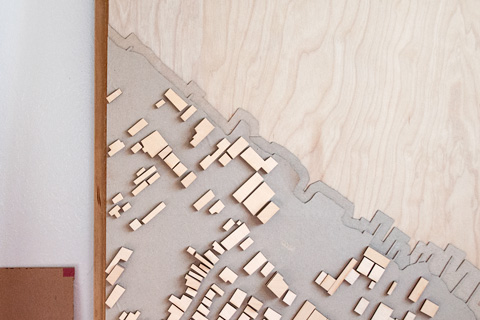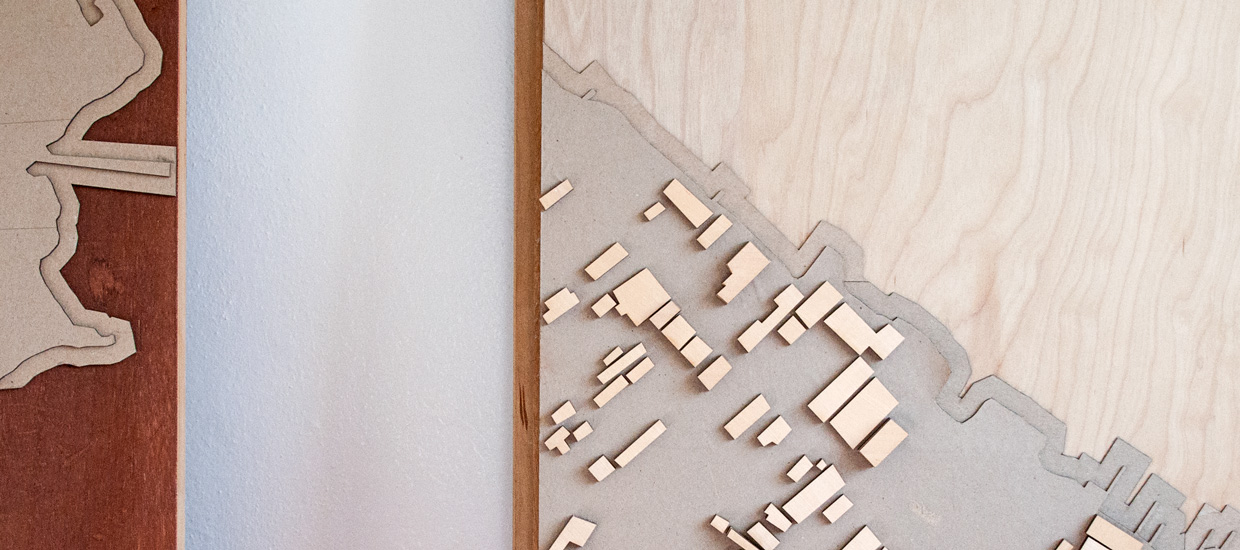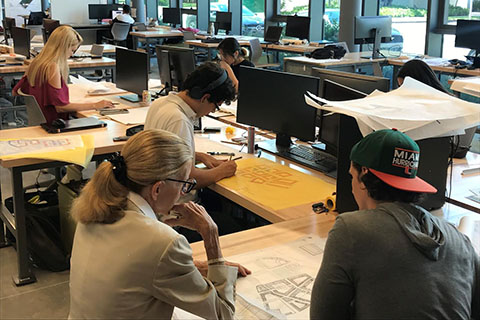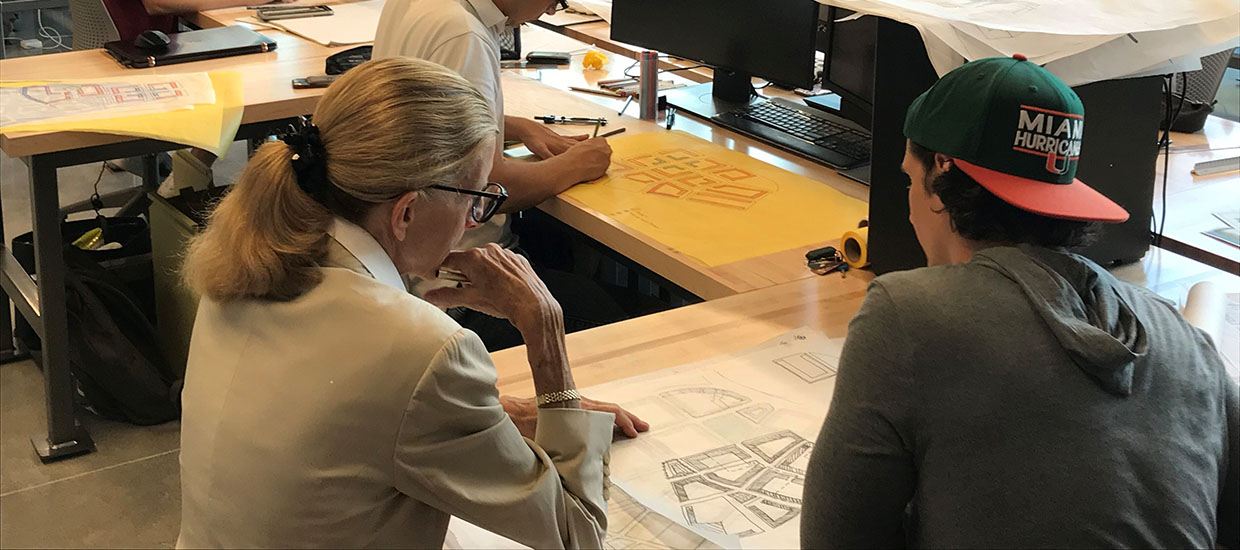

The Master in Urban Design is a three (optional four) semester program that provides students with a design experience investigating the guiding principles for building regions, cities, and communities. Guided by the imperatives of sustainability and resilience, the program conceptualizes cities as an extension of the ecological transect across the natural to human habitat, providing students with a range of experiences from rural to urban.
Program Director Elizabeth Plater-Zyberk, recognized for her foundational role in the development of the movement called the New Urbanism, leads the program that invites students to explore design, policy and management tools for place-making as a vehicle for improving quality of life in a variety of urban settings. The impact of the built environment on health, retrofitting the suburban landscape, real estate development as community building, adaptation to climate change, and urban growth and revitalization, are topics prominent in course offerings and faculty research.
The three-semester curriculum begins in the fall each year with foundation courses in urban design and real estate development, in an Interdisciplinary approach structured by environmental, social and economic goals. The spring semester intensifies students’ engagement with contemporary urban challenges such as climate resilience, healthy community design, and repair of suburban sprawl. The summer semester provides a concluding experience that aggregates prior topics in an international setting that challenges the goals of sustainability and resource conservation.
As part of the curriculum, students participate in the National Charrette Institute certification course, a training in public outreach and participatory planning, and collaborate with real estate development students in two special projects: a national design and development competition, and a local community revitalization plan. These experiences and the course work shared with the Master of Real Estate Development and Urbanism program provide focus on implementation.
The optional fourth semester of the Master of Urban Design program is a semester-long independent study design project or thesis. In recent years these have focused on topics such as greening a Brazilian city, socially integrated public housing in China, and an analysis of principles and metrics of Smart Cities and New Urbanism.
Other resources that enrich the urban design student’s experience in the School include the Center for Community and Urban Design (CUCD), engaging students in community outreach projects in South Florida and the Caribbean, and access to the Archive of the New Urbanism, housed in the School of Architecture Library. The Archive is a growing resource of documents, with both texts and images that support research related to urban design housed in the School of Architecture. Also, Research Affiliates from around the world join the faculty annually to study the state-of-the-art in urban design and architecture.
Guiding the ever-evolving program are faculty members Chuck Bohl, Jaime Correa, Eric Firley, Jean Francois Lejeune, and Joanna Lombard, internationally recognized in research, publication, and design.
While the Master of Urban Design is a post-professional program, structured for students with a professional degree in architecture, those holding a degree in engineering, planning or landscape architecture may apply for admission. A preparatory summer course may be required for non-architects, to be determined during the admission process.
History of the Program
Urban design offerings at the School of Architecture emerged in the 1980’s when a group of faculty members sought to have an impact on the urban growth of South Florida. The impetus was their study of Coral Gables, a Progressive Era new town, one of a series of Anglo-American Suburbs that can be found across the United States. George Merrick founded Coral Gables in 1923. He believed that for his city to be great it needed a university, and he set aside land for the University of Miami. The architects Merrick engaged in the building of Coral Gables founded the architecture program at the outset. Today, building on this legacy, the School of Architecture is renown for its dedication to preparing future professionals with an understanding of the larger context for their work in the environment and society.
In 1988, mentored by their city and their studies of its design, and by leading thinkers of the time such as Leon and Rob Krier, the faculty established a post-professional degree in urban design. The young faculty’s design of Seaside, now an icon of new community design, challenged the planning and development conventions of its day. The new Master’s program established the precepts of Traditional Neighborhood Development (TND) and of the Charter for the New Urbanism. The School’s faculty and alumni are among the founders of the Congress for the New Urbanism and have been prominent contributors to the evolution of the movement, now a globally renowned approach to sustainable urban growth and revitalization.
Program Curriculum
Youtube Video
Elizabeth Plater-Zyberk, Professor
Director of Master of Urban Design
Email: epz@miami.edu
Nicole Hejazi, Associate Director
Graduate Programs
1223 Dickinson Drive
Coral Gables, Florida 33146
Tel. 305-284-3060
Email: nhejazi@miami.edu







